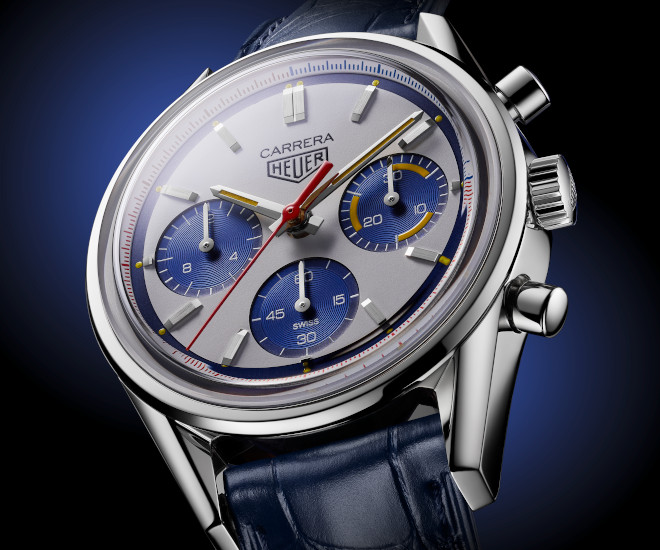Charting the evolution of Bulgari B.zero1 ring and introducing B.zero1 Design Legend by Zaha Hadid
The B.zero1 ring has been continuously reinvented. This year, Bulgari presents the B.zero1 Design Legend, conceptualised by the late architect Zaha Hadid

The B.zero1 Design Legend by Zaha Hadid ring in pink gold. Image courtesy of Bulgari
Over a decade ago, Bulgari established the B.zero1 ring, inspired by the Colosseum in Rome, Italy. It was named B.zero1, to symbolise the “B” of Bulgari and the zero.1 of infinite beginnings.
The B.zero1 ring has since evolved into an iconic collection for Bulgari, engendering numerous reinventions, such as the 2010 B.zero1 designs by Anish Kapoor in celebration of the collection’s decennial. It has come to embody charisma, allure, independence, and spiritedness. In October 2016, the Smithsonian Institution declared the B.zero1 ring a “jewel of extraordinary design” in their compendium, ‘Gem: The Definitive Visual Guide’.
This year, Bulgari presents the B.zero1 Design Legend, conceptualised by the late Zaha Hadid. The Iraqi-British architect is well known for her daring ideas and the signature curves in her many architectural projects all over the world. These have garnered her many awards throughout her career, including the prestigious Pritzker Architecture Prize in 2004, for which she was the first female recipient, and the Stirling Prize in both 2010 and 2011.
Art Republik discusses the B.zero1 Design Legend with Maha Kutay, Director at Zaha Hadid Design, to find out more the collaboration between Bulgari and Zaha Hadid, and the inspiration behind the ring’s design.
How would you summarise Zaha Hadid’s vision in architecture and other works? Moving forward, how will her vision influence the works of the firm?
Zaha’s vision undoubtedly redefined architecture and design for the 21st century and captured imaginations across the globe. Marrying concepts of integration and connectivity with technological advancements, ecologically sound materials and sustainable construction methods, she has never looked at the disparate parts, but worked hard to understand them as a whole, to raise standards and benefit all.
Zaha taught us to work with curiosity, integrity, passion and determination, and everyone at Zaha Hadid Architects (ZHA) is committed to continuing this legacy.

The B.zero1 Design Legend by Zaha Hadid ring in pink gold. Image courtesy of Bulgari
How did Zaha Hadid come to work with Bulgari for the B.zero1 Design Legend?
The discussion for this collaboration took place at the launch of the Serpenti Installation at the Bulgari Hotel in Milan in April 2015, when Zaha Hadid and Bulgari’s CEO Jean Christophe Babin first discussed the idea.
B.zero1 seemed to be the perfect project for a reinterpretation of its original design. As the original B.zero1 design was based on an architectural icon — the Colosseum — Bulgari decided to start this new collaboration with Zaha Hadid, one of the most renowned architects of our time.
Hadid looked back to the classical design of the Colosseum and reinterpreted it for her design of the B.zero1. How else has she looked back and reinvented past designs in her own style so that they become cutting-edge designs of today?
Not really; rather than being tied to a specific building, I would say that the inspiration comes from a variety of elements we have used and still use in the development of our architectural concepts: repetition; linearity; fluidity; explosion and vortex motion. We are always investigating existing ideas and established traditions — especially in this case, considering Bulgari’s bold and distinctive heritage — but then we reinterpret those ideas into something new.

The B.zero1 Design Legend by Zaha Hadid pendant in pink gold. Image courtesy of Bulgari
What is it about fragmentation and abstraction that captured Zaha Hadid’s imagination for her work?
Zaha studied architecture at the Architectural Association where, at that time, they were addressing and deconstructing ideas of repetitiveness and mass production, and she became interested in the concept of fragmentation and with ideas of abstraction and explosion. Her work first engaged with the early Russian avant-garde — the paintings of Moholy-Nagy, El Lissitzky’s ‘Prouns’ and Naum Gabo’s sculptures, but in particular with the work of Kasimir Malevitch. Malevitch was an early influence for her as a representative of the modern avant-garde intersection between art and design; he discovered abstraction as a heuristic principle that could propel creative work to new and higher levels of invention.
The Evolution of the B.zero1 Ring
1950s

“Bib” necklace in gold with emeralds, amethysts, turquoises and diamonds, 1965. Image courtesy of Bulgari
Amidst 1950s diamond-focused designs, Bulgari begins fashioning rebellious creations with semi-precious and precious stones together, inventing an unprecedented style with colour combinations.
1960s-1970s

“Tubogas” bracelet-watch in gold, ca 1972. Image courtesy of Bulgari
Bulgari pursued the metamorphosis of bijouterie through the materialisation of motifs which employed atypical constituents, such as steel, silk, and ancient coins.
In addition, Bulgari unveiled the inaugural Serpenti Tubogas timepiece. Tubogas, or the mechanisms extrinsic to soldiering employed to construct bands of smooth, elegant curves, developed into a representative technique of Bulgari’s in the sixties.
1999

Bulgari B.zero1. Image courtesy of Bulgari
Bulgari debuted the B.zero1 ring. The ring was impelled by Bulgari’s appetency with the capital of Italy and the structure of the Colosseum. The inaugural B.zero1 was well received by jewellery aficionados, who characterised the ring as timeless and sui generis.
2000-2009
Several other variations of the B.zero1 ring as well as pendants, earrings and bracelets were introduced.
2010

Bulgari B.zero1 pink gold and steel ring by Anish Kapoor. Image courtesy of Bulgari
The B.zero1 was reinterpreted by British sculptor Anish Kapoor. To commemorate B.zero1’s tenth anniversary, Anish Kapoor transformed the original tubogas-inspired spiral into a layer of shiny, mirror-like appearance, integrating contemporary art with B.zero1’s distinctive character.
2012

B.zero1 pink gold and blue marble four-band ring. Image courtesy of Bulgari
The noteworthy B.zero1 marble ring collection was revealed, which harmonised the external bands of pink gold with the exceptional green, brown and blue marble.
2014

B.zero1 Roma pink gold and bronze ceramic four-band ring. Image courtesy of Bulgari
The B.zero1 Roma Ring was released in celebration of Bulgari’s anniversary of 130 years, featuring bronze ceramic enclosed in pink gold bands, which evoke the monolithic structures of Italy’s capital.
2015

B.zero1 in pink gold and black ceramic with pavé diamonds along the edges. Image courtesy of Bulgari
Bulgari presented the gamesome B.zero1 ceramic ring collection, enhanced with pavé diamonds on the edges highlighting the stylish motif of the circular double logo. The B.zero1 ceramic ring collection, informed by clean lines, elegance and finesse, paid homage to the Bulgari Chandra collection, launched in 1994.
2016

B.zero1 Perfect Mistake. Image courtesy of Bulgari
One of the most recent additions to the B.zero1 collection is the B.zero1 Perfect Mistake, which blossomed from a second prototype devised much earlier in 1999, that did not quite turn out the way it was intended, but seemed perfect to revisit for 2016. B.zero1 Perfect Mistake harmoniously amalgamates pink, white, and yellow gold, and exemplifies the conversion of a creative mistake into resplendent imperfection.
Additionally, the B.zero1 bracelet form materialised through a third prototype, which constituted a band that received maximum extension or stretching. The B.zero1 bangle bracelet expresses adventure, with nuances of delicacy.
2017

B.zero1 Design Legend by Zaha Hadid four-band ring in pink gold. Image courtesy of Bulgari
This year, Bulgari incorporates an adaptation of the inceptive B.zero1 ring by Zaha Hadid into the collection. The collection’s latest addition is cleped the B.zero1 Design Legend. Distinguishing the central body of the ring are oscillating waves framed by B.zero1’s signature two exterior bands.
The B.zero1 Design Legend has been unveiled in a four-band, pink gold manifestation alongside three-band versions in white or pink gold, and an avant-garde pendant in pink gold. The design incorporates the two Bulgari hallmarks — the BVLGARI double logo and the tubogas motif, in a deconstruction of its inaugural predecessor, and stretching the boundaries of bijouterie design.

The B.zero1 Design Legend by Zaha Hadid ring in pink gold. Image courtesy of Bulgari
Zaha Hadid’s Projects in Asia
The Peak Leisure Club, Hong Kong, Not Realised

The Peak Leisure Club, Hong Kong, Not Realised, Zaha Hadid Architects. Image courtesy of Zaha Hadid Architects
In 1982-1983, Zaha Hadid won a competition to design a building divergent to existing skyscapes in Hong Kong. This design secured the architect global recognition. Her painted impressions of the Peak transpired from her voyage across China in 1981.
The Guangzhou Opera House, Guangzhou, Completed in 2010

The Guangzhou Opera House, Completed in 2010, Zaha Hadid Architects. Photography by Virgile Simon Bertrand
The Guangzhou Opera House took five years to complete. The double boulder structure represents two stones deposited on shore from the Pearl River. The stunningly detailed Guangzhou Opera House comprises a large performance hall which seats 1800 people and a multipurpose hall designed to seat 400.
Galaxy SOHO , Beijing, Completed in 2012

Galaxy SOHO, Beijing, Completed in 2012, Zaha Hadid Architects. Photography by Hufton+Crow Photographers
The Galaxy SOHO was Zaha Hadid’s inaugural project in China’s capital. Its construction generated controversy over the compromise of heritage in favour of modern development. Conceived with the intention to provide seamless access between retail spaces and office spaces, the project showcases the architect’s skillful play with unconventional shapes, geometry and lines.
Dongdaemun Design Plaza, Seoul, Completed in 2013

Dongdaemun Design Plaza, Seoul, Completed in 2013, Zaha Hadid Architects. Photography by Virgile Simon Bertrand
The proposal for the Dongdaemun Design Plaza, or the DDP, conceptualised by Zaha Hadid and Samoo Architects and Engineers Construction, won a global design competition in 2007. The futuristic structure, which incorporates art halls, a museum, design labs and the Dongdaemun History and Cultural Park amongst other amenities, realised over seven years.
The Sleuk Rith Institute, Phnom Penh, Detailed Design Stage

The Sleuk Rith Institute, Phnom Penh, Detailed Design Stage, South Facade and Memorial Park, Zaha Hadid Architects. Image courtesy of Zaha Hadid Architects
The Sleuk Rith Institute was designed in 2014 as the site for documents relating to the devastating legacy of the Khmer Rouge in Cambodia. The Institute is determined to learn from Cambodia’s past in order to heal and shape Cambodia’s future, and Zaha Hadid Architects have provided a design that pays respect to the Institute’s mission while diverging from conventional monument forms.
This article is written by the Art Republik Editorial Team and was originally published in Art Republik 14.
Immerse yourself in the Bulgari B.zero1 Design Legend Virtual Reality Experience at Takashimaya Shopping Centre, Singapore from today to April 12.









